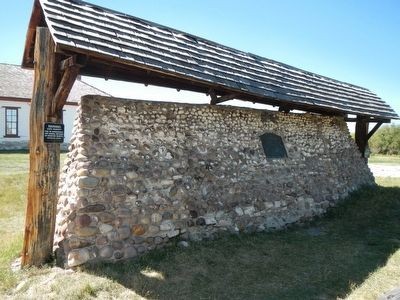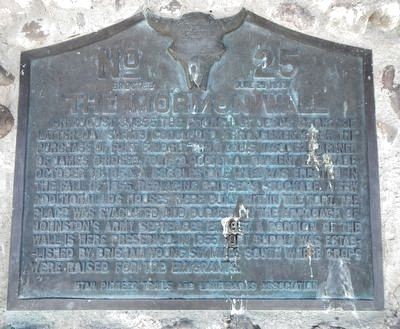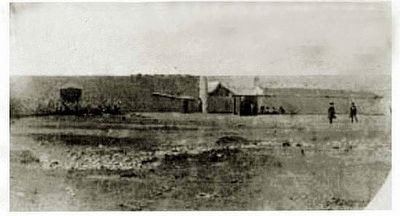The Mormon Wall
Introduction
Text-to-speech Audio
Images
A surviving portion of the Mormon Wall

A marker embedded into the Mormon Wall

An old picture of Ft. Bridger showing part of the Mormon Wall

Backstory and Context
Text-to-speech Audio
Mormon settlers reported to Brigham Young, in Salt Lake City, that Bridger was selling liquor and ammunition to the Indians — a violation of federal law. On 26 August 1853, Young, a federal Indian agent, started a Mormon militia of forty-eight men for Fort Bridger from Salt Lake City. Upon arrival the Mormons discovered plenty of liquor, which they destroyed. They found no ammunition.
Jim Bridger escaped minutes before the Mormons arrived. Two months later, in October 1853 Bridger wrote to General B.F. Butler, a U.S. Senator. In his letter, Bridger claimed he was "robbed and threatened with death by the Mormons" and that over $l00,000 of his goods and supplies had been stolen.
Worse was to follow. In the spring of 1854, Brigham Young sent fifteen well-armed men to take control of the Bridger trading post. The men built a large wall of stone around the fort and several stone buildings. As well as the stockade, these men also took control of the Green River ferries. Both locations were an integral part of the Mormon settlement plan and considered to be part of the greater Utah territory.
Mormons controlled the fort until Jim Bridger returned a year later in July 1855. The Mormons asked him to sell, but he refused. However, due to pressure from the Mormon militia, he agreed to a sale of $8,000 a month later. $4,000 was paid immediately, and the balance was to be paid fifteen months later in November 1856. However the Utah War, an armed dispute between Latter Day Saint settlers in Utah Territory and the U.S. government intervened. Because of this confrontation, which lasted from May 1857 until July 1858, Jim Bridger never received the $4,000 balance owed him for his fort.
